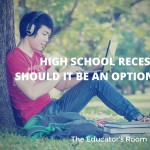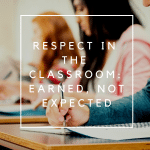Just as 1:1 technology gains ubiquity in classroom education the movement against its success is populating social media, straining to establish evidence that digital devices are harmful. There is an irony to the viral backlash that circulates discussion boards and the social media tools that are the very target. I for one remain unconvinced that digital technologies are responsible for lowering assessment scores and making children less educated. With every change in education there will be a need to sort the beneficial from the detrimental and we are right in the middle of that change.
My rationale for keeping digital technologies in the hands of youngsters is not without caution. Every day in our 1:1 school program we see students struggle with addictive behaviors, obsessive game time and an inability to socialize unless through social media. Healthy limits is sensible whether its is dessert, internet or connectivity in the home. The argument that excessive use of technology is lowering math and reading skills makes no sense; more access to tools of any kind is not a cause for losing gains in knowledge. Never has there been a time when giving my daughter more kitchen utensils amounted to lower food production or fewer crayon colors led to lower quality artwork yet there is a guarantee of gains of skill when supervision and guidance are provided. When we measure standards in education there is something to be said for guided and unguided instruction. There are times for experiment and creative exploration and there are times for structured performance.
Students lead as model learners when they download entertainment, explore social media and game for a purpose beyond consumption. Adults should engage in these virtual spaces where replay, modification, and tiered expertise is the norm. Children love to discuss their strategies and show off their gains with an emphasis on collaborative problem solving. Their inhibitions can be utilized for common good. Just yesterday, my daughter heard me complain about autocorrects on a text message. She used my phone to select only autocorrects until she had a paragraph of autocorrected prose. This stream of consciousness was clever enough to send to friends. Her game, my frustration became a problem solved.
Paper. Technology should not be seen as an affront to learning but as a means of delivery whether it is paper or video recording or a mobile device. What matters is how each tool offers prominence to the goal at hand. Classrooms or homes that do not offer discussion around the use of tools are going to run into roadblocks. I ask students to weigh the benefits of routine practice, tangible qualities and the familiarity of paper with comparative advantages of notetaking apps that can enhance notes with embedded sounds or images, maps, color graphs, akin to designing a personal textbook. Discussion leads to choice decision making and self reliance.
Balance. Adults continue to give too little or too much control of technology to children. Teaching in a 1:1 environment means constant supervision not less. I walk many laps around classroom stations observing student progression and monitoring activity. I present a number of possible tasks and a suggested work flow. Time limits are set but students may request time adjustments and or a better work flow. A minimum progression is expected and there is always time for self exploration.
Turn off time. Sitting for 45 minute lectures or watching a feature length film in class never amounted to greater learning at any time in education and it definitely highlights all classroom management issues with today’s student. Lectures still hold value but for shorter blocks of time interspersed with “pair share” moments. Students do turn off devices, discuss ideas face to face with peers and then present their findings as teams. It helps to have students return to a purposeful use of technology by sending quick audio responses which can be reviewed at a later time. When there is undivided attention to the task of presenting and fewer assignments for assessment, everyone wins.
Multitasking is not the same as distracted driving. I’m reminded of a display I saw at the Kennedy Library years ago of President Kennedy’s notepad filled with pencil doodles drawn during the Cuban Missile Crisis. These doodles helped him find a way to keep calm and to carry on. Similarly I text or web search during meetings to keep from falling asleep or spouting angry responses. Not all multitasking is balanced and texting leads to distracting and rude behaviors. Students drawn to the instant feedback and the constant connection lend themselves to the risks of abusive bullying or worse. Some schools require messaging to be turned off or rely on apps that can lock students to one application but it doesn’t solve the long term problem of learning to navigate risk or to develop problem solving strategies. Student bodies are responding with positive text campaigns and their own anti bullying preventions. One school in Vermont even campaigned to shut down an app through iTunes with success. Recognizing that texting is their method of communication encouraged me to use a school sanctioned app for homework updates, surveys and reminders of classroom events. Remind is non invasive of student privacy; it sends my text without the expectation of a response. I can also deliver a single question right in class to refocus attentions.
While speculation is made concerning academic, socioeconomic and racial divides due to improper uses of technology, evidence is anecdotal. I thought about this as I helped a school volunteer set up their very first email account. It was painful, watching an otherwise astute, confident adult fumble to type one letter at a time and panic when we swiped out of the application. I’m busy reloading funds into Paypal, paying my bills online and weighing decisions to move to Google wallet or Apple pay and I wonder, which is worse; not providing students with technology thus eliminating opportunities to experiment or to give them technology but base opportunity for improvement on hope alone? Hopefully we will seek balance.





